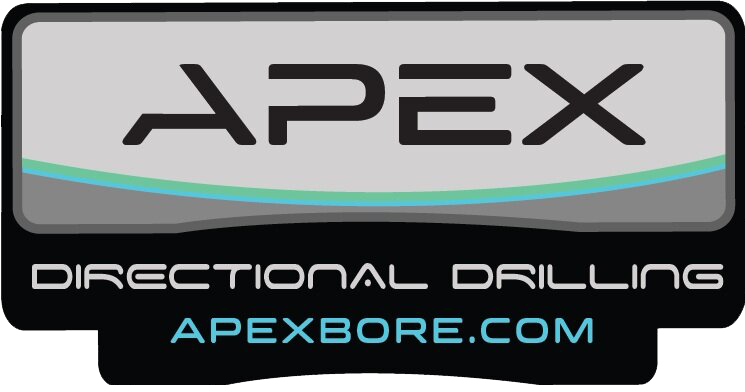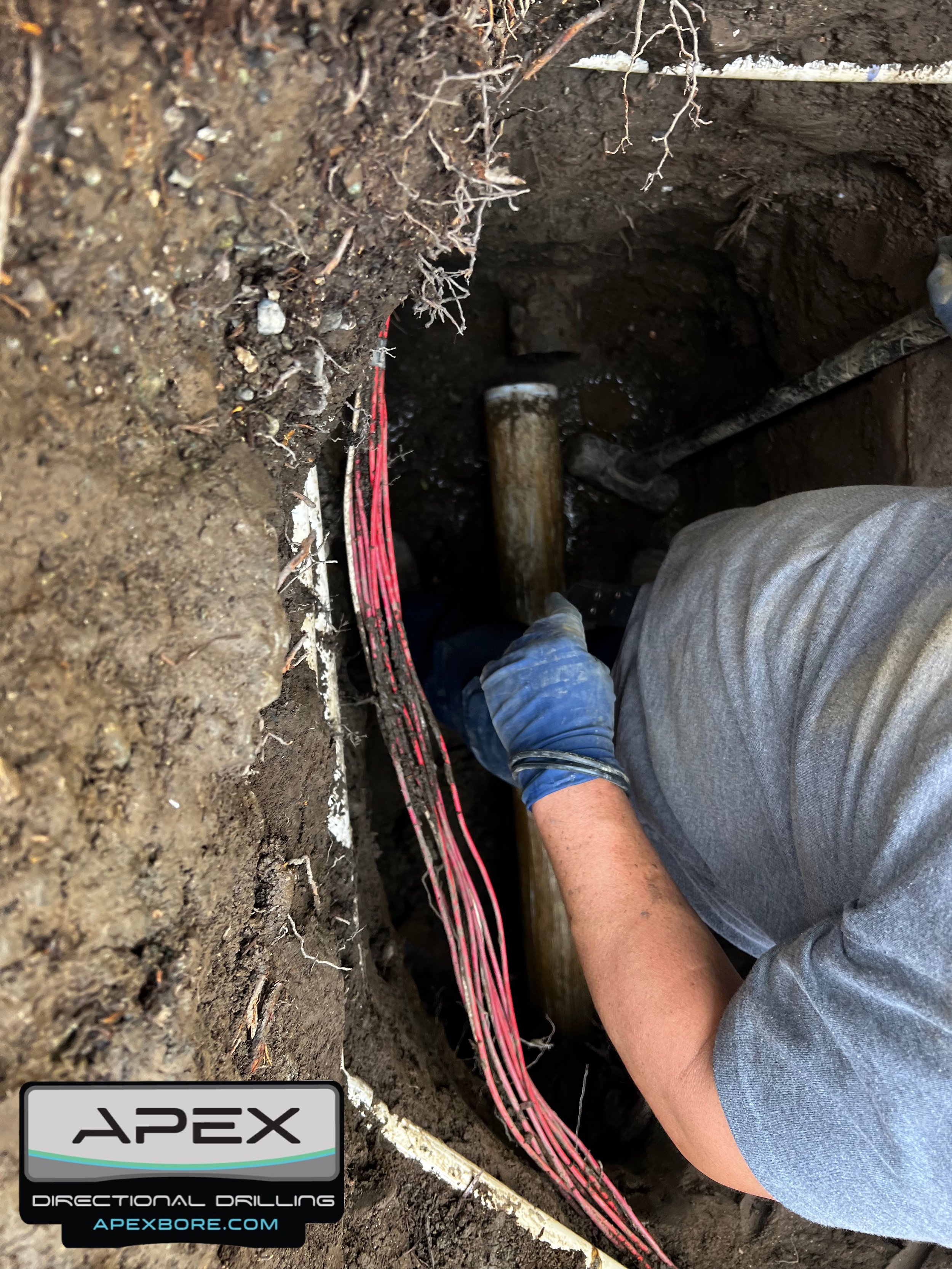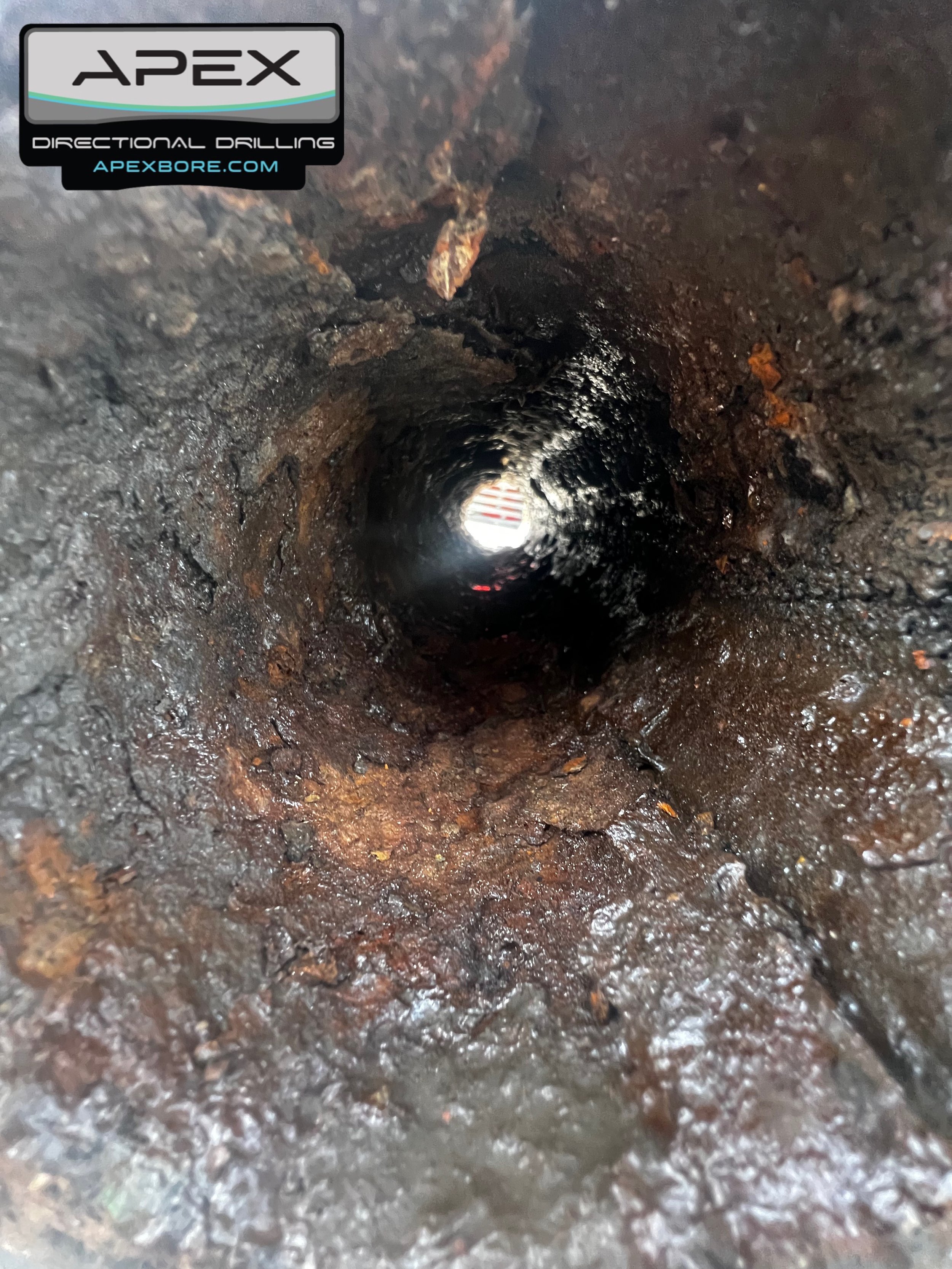LATERAL PIPE BURSTING
The Process:
Sewer Camera Inspection - A certified plumber will place a specially built high-resolution video camera into your sewer pipe and transmit the footage back to determine the depth and location of your current sewer line, as well as the source of any sewer line issues.
• Dig modest Entry and Exit Points: Two modest entry and exit points are dug near your foundation and property border.
• Weld New Pipes in Place with Heat - The new sewer pipe is heat welded above ground to prevent future breaks or tree roots from interfering with your sewer line.
• Pull new pipes through existing pipes to break them and install new ones simultaneously. Origins of Trenchless Pipes
Pipe bursting machine hole, wrapped in 1 1/2” irrigation pipe, irrigation controller pullback home. wires, gas line to right aide of photo and sewer 6ft deep, 28” wide x 38” long 12” deep below existing sewer line.
Exposing section of sewer that is cracked on the bottom to break a section to pipe burst.
Commercial Pipe Bursting Advantages
Sewage system repair can be an exceptionally challenging endeavor, particularly when applicable to commercial properties. It is also potentially hazardous and extremely time-consuming and disruptive. Trenchless technology advancements have thankfully provided an abundance of no-dig solutions. Bursing pipes is one such method. Listed below are several of its advantages.
Pipe Bursting Clarification
conduit bursting is the process of replacing a damaged, old conduit with a new one after blasting it out. This can be accomplished without excavating, as the hole created by the rupture of the preceding pipe expands momentarily to accommodate the inserted pipe.
Offering a no-dig alternative, this is especially advantageous from a business standpoint. Large-scale excavating is not recommended in densely populated, congested regions. However, pipe bursts are an excellent alternative because they can be performed in confined spaces with minimal disruption.
Mitigates Trench Settlement
Particularly prevalent in commercial zones with heavily traveled pavements, trench settlement is a well-known concern during sewer excavation and replacement. Pavements and trenches both subside, rendering them not only more difficult to traverse but also less visually appealing. Although this can be remedied in the future, it incurs an additional unnecessary expense.
Its Costlier
Demolition of an entire location in order to install new pipes is a costly endeavor. Not only will it take some time, but it will also necessitate a large number of employees. Pipe bursts prove to be an anomaly to this rule. As there will be no excavating involved, significantly fewer individuals are required to finish the repair. Additionally, the replacement process requires significantly less time than the insertion of the new conduit.
Fewer Damages
Commercial zones will be extremely occupied and require the least amount of disruption feasible. A substantial amount of damage will be caused if an area must be completely plowed up; this damage will not be repaired overnight. Additionally, the absence of digging prevents hazardous substances from reaching the earth.
Prolonged enduring
If the pipes that were previously installed are old, pipe bursting is an infinitely preferable option to attempting to restore them. Clay and cast iron, which are traditional pipe materials, corrode and fracture over time, increasing their susceptibility to leakage and eventual failure. However, contemporary pipelines are considerably more durable and long-lasting, which drastically reduces the likelihood of further repairs.
It Is More Secure
It is unlikely that blowing up a conduit would be more hazardous than digging it out. Much underground, including mildew, is best left unattended. Upon complete excavation, these foul substances are brought to the surface. It might present minimal danger, but in populated commercial locations, what is the point of endangering individuals when it can be avoided?
Increases Flow Capacity
Due to the transient increase in hole breadth caused by pipe bursting, there exists a potential to insert a pipe that is marginally larger in diameter. Consequently, discharge capacity is increased, which improves the operation of a sewage system.
Pit for pulling 4” sewer back from.















